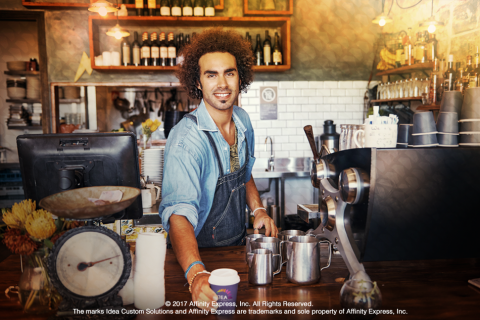It seems today like gourmet coffee is just another part of life. It's something that is consumed as readily by Americans almost as much as air, water and food. Today, coffee comes in just about any flavor, roast, or serving style imaginable and plenty of busy coffee lovers even pay a little extra (and wait up to five minutes!) for single cup of coffee.

But it wasn't always that way. Think if you can back to the early 1990s.
Whether America suddenly woke up to a sense of good taste, an Italian-inspired gourmet renaissance or a need for more caffeine, it wasn't long before a local Seattle favorite called Starbucks coffee started popping up everywhere. Soon after Starbucks was the talk of the town, direct competitors like Peet's and Canada's Gourmet Cup opened stores in major cities and suburban shopping centers. Old standbys like Dunkin' Donuts marketed more heavily to coffee drinkers and not just donut lovers.
Eventually, Starbucks became more than just a convenient coffee stop on your way to work. Starbucks became a brand story. Brand and marketing specialist Alessandra Ghini spoke last winter with Fast Company about being hired on as part of the Starbucks team. Going bigger at first meant crafting an identity.
"We changed the logo," Ghini says. "We did a lot of the logo work internally before we engaged with [the design agency] because they had a young design team inside." As with every small company and great idea that would turn into a global brand, that original Starbucks logo morphed and changed over time, just like that of McDonald's, Mastercard and other companies with very different customers and products.
More importantly though, for Ghini, developing the coffee outfit's brand involved not just making the logo unique and famous. Her work involved something more personal when it came to the products — and the experience — Starbucks wanted to convey.
"You don’t go to Starbucks to connect with someone over a massive scone," full entrees, or other large food servings, Ghini recalled. "Instead they developed smaller items. Power packs. Mini bites. Cake pops. All of that came out of that brand work."
Later as Starbucks began to experiment with offering these different food products that were tailored to coffee, Ghini says that it still was never about promoting products. The Starbucks brand never got tied to that one baked good that packed a sugar buzz or even a posh, new coffee blend.
"We focused on the moment of connection, whether it’s a barista knowing your name, or you having a quiet moment over coffee with a friend."
Interestingly enough, the apparent dominance of Starbucks didn't stop other entrepreneurs from venturing into coffee's competitive market space. Nor did the Seattle firm's large presence keep others from sharing their own coffee experiences with consumers.
Intelligentsia Coffee, founded in Chicago in the early 1990s, started only with a store on Broadway in the Windy City's Lakeview neighborhood and a roasting facility. In addition to being "barista and roaster and delivery boy", co-founder Doug Zell hints that his obsession for great coffee quickly courted Lakeview locals.
It didn't matter that the same block also offered coffee drinkers a 7-Eleven, three diners and another local favorite called the Coffee & Tea Exchange to choose from. Zell and co-founder Emily Mange built their brand by sharing their love for what would later be referred to as craft coffee. Before long, Intelligentsia had its brew featured in sandwich shops and high-end restaurants all over the U.S. This once little brand (which has been acquired by Peet's) eventually became a profitable leader in its market.
Following Intelligentsia's success or in spite of it, other specialty craft coffee makers and small brands especially began to spread their wings. Philadelphia-based Colombe began opening new locations outside of their hometown — in Chicago and New York. Meanwhile, Portland-based Stumptown started placing their fan-favorite whole bean coffee and bottled iced brew on grocery store shelves nationwide.
While these brands probably don't aim to be the next Dunkin' Donuts or court the same customers necessarily, they maintain healthy brands that appeal to coffee drinkers. According to Business Insider, small craft coffee brands may be the biggest threat to behemoths like Starbucks and Dunkin'. So much for the idea that coffee is just a commodity!
Regardless of what's trending in food and beverages here and abroad, it's fair to say that coffee is never going away. And, just like coffee, new brands continue be born and prosper through the ingenuity of the American entrepreneur.
If you need outstanding branding support for your business or your customers, don’t forget that Idea Custom Solutions offers logo design and other custom services, which open the door to achieving the level of success business owners dream about .

Add new comment